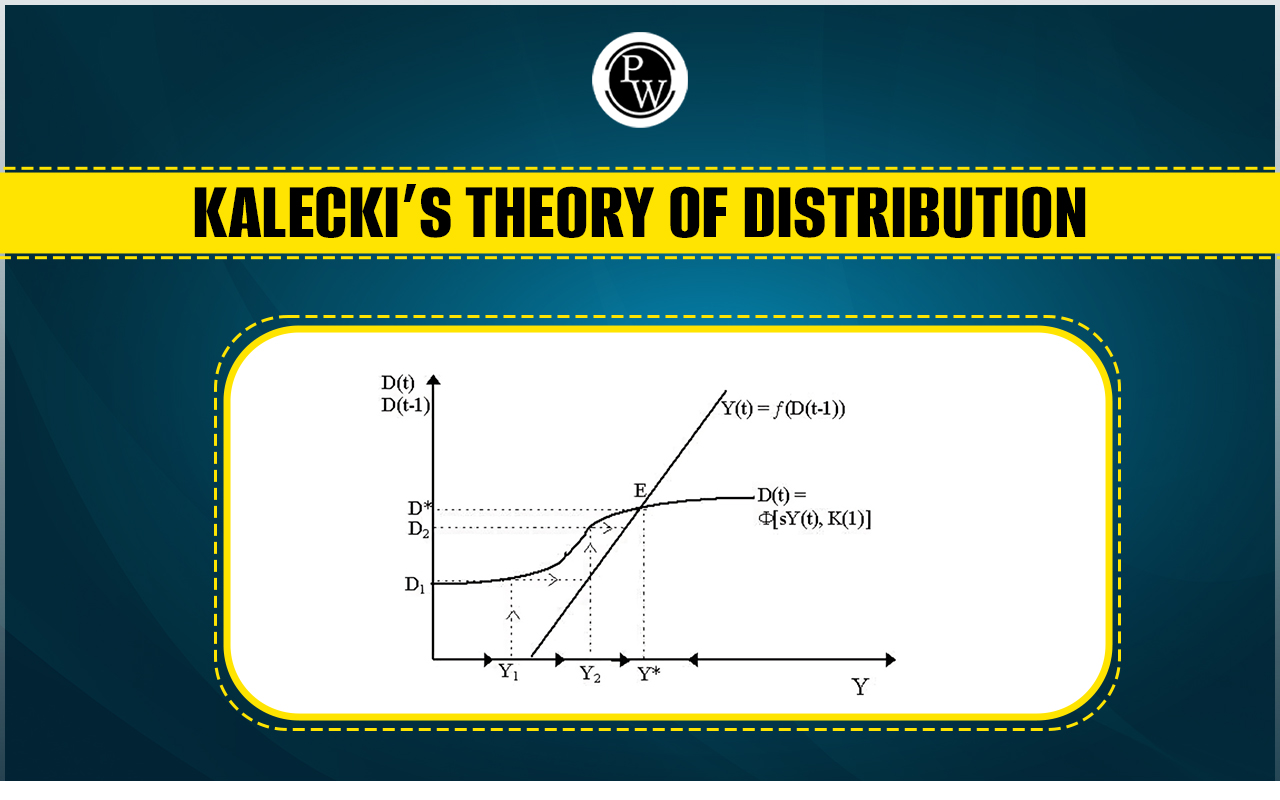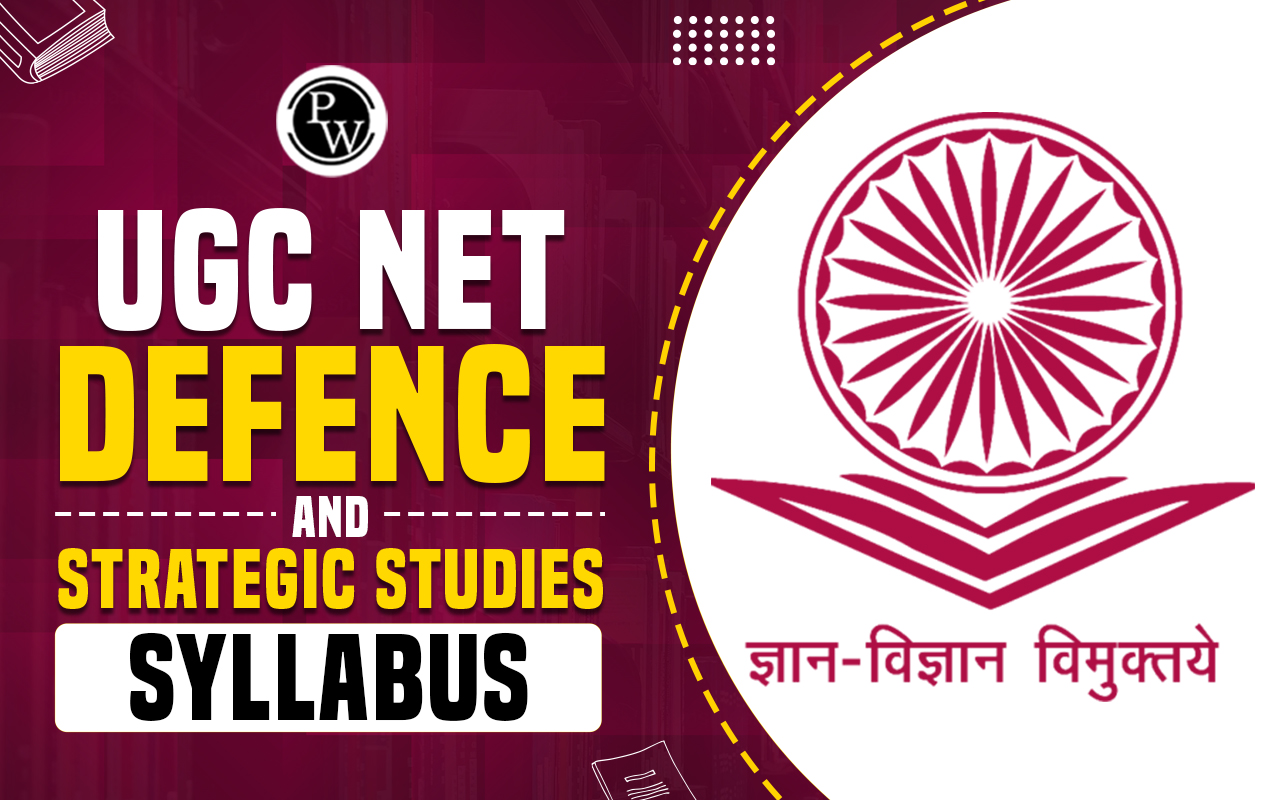

Kalecki's Theory of Distribution: Michal Kalecki, a Polish Economist, developed this theory. Kalecki's Theory of Distribution provides a unique perspective on income distribution in an economy, emphasising market power and class struggle. It is based on the core notion that the personal distribution of income between profits and wages is a reflection of the relative bargaining power between the two: that of the capitalists vis-à-vis that of the workers. In contrast to the neoclassical theories of income distribution, couched in terms of marginal productivity, Kalecki's theory brings monopoly power, aggregate demand, and political factors into the determination of income distribution. This article explores Kalecki's Theory of Distribution, highlighting its fundamental concepts, assumptions, process, implications, criticisms, and concluding remarks.
Kalecki's theory highlights the relevance of market flaws and bargaining power in determining income shares, which challenges standard economic theory. Kalecki’s Theory of Distribution holds a major role in the UGC NET Study Notes for aspirants aiming to go for the UGC NET Exam 2024 this August-September 2024 cycle as well as for the December cycle. This article aims to provide you with UGC NET Notes for Education so you can excel in the exam with flying colours.Fundamental Concepts of Kalecki's Theory of Distribution
The fundamental ideas of Kalecki's Theory of Distribution emphasize the connection between socio-political variables and market processes. These ideas are: Degree of Monopoly: Kalecki places a strong emphasis on how market power affects pricing. The ability of businesses to set prices above their marginal costs is reflected in the degree of monopoly. Greater profit margins are possible for businesses with higher monopoly power, which affects how money is divided between wages and profits. Class Conflict: The theory emphasizes the struggle that exists between workers and capitalists. Kalecki contends that the bargaining power of these two classes has a major impact on the distribution of income. While capitalists aim to maximize their profits, stronger labour unions and workers' groups can negotiate greater salaries. Cost-plus Pricing: According to Kalecki, businesses should adopt this pricing strategy, in which prices are established by marking up production costs. The degree of monopoly power determines the size of the markup; larger markups translate into bigger profits for capitalists. Investment and Profit Determination: According to Kalecki, a company's investment choices are a major factor in determining its profitability. Increased demand for products and services as a result of higher investment boosts earnings. This relationship emphasizes how capitalists' investment choices have a significant impact on how income is distributed. Function of Monetary and Fiscal Policy: According to Kalecki, the distribution of income is significantly impacted by monetary and fiscal policies of the government. Spending by the government, for example, might increase demand, which raises earnings. On the other hand, strict steps to cut back on spending can hurt the way that income is distributed. Economic Cycles and Distribution: The theory also discusses how income distribution is affected by economic cycles. Profits typically increase during economic booms as a result of higher pricing and more demand. On the other hand, during recessions, workers' negotiating power usually decreases and earnings decline, which results in a more uneven distribution of income.Kalecki's Theory of Distribution Assumptions
Kalecki's theory is based on various fundamental assumptions which set it distinctly apart from other economic theories. These assumptions sum up the majority of the portion of this topic as UGC NET Study Notes which are as follows: Monopolistic Competition : Kalecki assumes that firms enjoy some form of market power, which gives them the leverage to influence prices and generate a markup over costs. It challenges the classical notion of perfect competition. Class Conflict : It is based on the basic class conflict between the capitalists and workers. This class struggle influences wage bargain, price determination policy and, hence personal distribution of income. Aggregate Demand: He lays much emphasis on aggregate demand as a determinant of economic activity and income distribution. He showed that changes in demand would result in variations in employment, wages, and profits. Investment and Savings Behaviour : Kalecki holds that investment decisions are taken essentially by profit expectations, and savings depend upon income distribution between profits and wages.Kalecki's Theory of Distribution Process
Kalecki's theory of distribution requires an understanding of several interlinked steps in the process of distribution. These steps include an important part of the UGC NET Notes for education.Pricing and Market Power
Firms that enjoy market power charge a price from which a markup is added to their cost of production. The markup is determined by the competitive environment and the labourers' bargaining power. Therefore, if competition is low in markets, the markups the firm will be able to achieve are higher; hence, its profits. The opposite happens in highly competitive markets: the markup may be lower and the margins accordingly smaller.Wage Determination
Wages are determined through negotiation by workers, usually through labour unions, with the firms. The bargaining outcome depends on the relative bargaining power between the two parties. If labour unions are strong, high wages can be attained, which reduces the profit share. The weak bargaining power of workers allows the firms to keep wages low, thus increasing profit shares.Profit Determination
Profits are leftover incomes after the wage bill is paid. Profit share in national income is dependent on the mark-up that firms choose independently and the wage bargain by workers. Higher mark-up and lower wages result in a higher share of income going into profit and a lower mark-up with higher wages results in a higher share of workers.Investment Decision
Investment decisions of firms are led by expected profits. In the event of high-profit shares, firms would invest in production expansion, leading to growth. If the expectations of profits are low, they may reduce investments, hence leading to stagnation.Kalecki's Theory of Distribution Implications
The theory of Kalecki has deep implications for economic policy and understanding the personal distribution of income. Aspirants can consider this in their UGC NET Study Notes to prepare well:Economic Stability
According to Kalecki, it may be noticed that wage increases can lead to the stabilization of the economy due to the impact of growing aggregate demand. An increase in wages allows workers to afford more, thus creating demand for goods and services. This additional demand could have higher output, higher employment, and economic growth overall. Such a view has violated the assertion that high profits are essential to assure investment and growth and thus means that a fall in income inequality could result in greater stability of the economy.Income Inequality
Kalecki's theory of distribution underlines how power dynamics act to promote income inequality. If huge market power exists among capitalists and little bargaining power exists on the side of workers, more income will flow toward profits in such economies. Hence, more inequality in income distribution can be expected. Policies that aim at strengthening labour unions or enhancing worker bargaining power can assist in creating a more even distribution of income, engendering less inequality and greater social cohesion.Role of Government
Kalecki emphasized the role of government in intervening in monopolies, labour protection, and demand stimulation through fiscal policy. Policies aimed at enhancing competitiveness amongst businesspeople, protecting workers, and investing in public goods may reduce the power of capitalists against workers in the economy. That would mean a fairer distribution of income. In light of this approach, there exists an extremely significant function of the government in making the economy more just. According to Kalecki's theory, income distribution changes are one of the prime reasons for changes in aggregate demand, thus leading to business cycles. If income is more equitably distributed, then aggregate demand will be stable, hence smaller in amplitude business cycles. Correspondingly, with the flow of income heavily towards profits, it would be more unstable, hence bigger economic fluctuations. These insights provide a very important perspective on the causes of economic instability.Kalecki's Theory of Distribution Criticisms
Despite its vital insights, Kalecki's theory of distribution has faced several criticisms which can also be taken into consideration for UGC NET Notes for Education:Simplistic Assumptions
One of the criticisms levelled against him is that his assumptions of monopolistic competition and class struggle are straightforward and thus cannot be used as an accurate model for modern economies. While this theory offers an excellent framework, it may simplify the interactions of the various economic agents and the factors affecting personal income distribution.Neglect of Technological Progress
Kalecki's theory does little to recognize the role of technological change in causing changes in income distribution and productivity. Improvements in technology can drastically alter the pattern of organization of production, the labour market, and, in turn, the pattern of income distribution. In the process, if not including these dynamics, Kalecki's theory could miss some important aspects of modern economic development.Empirical Validation
Indeed, many economists have rejected the empirical validity of Kalecki's predictions, as his hypotheses are very hard to test and verify. The outcome is that theoretically, the theory that Kalecki presented may be quite productive, but in practice, the empirical studies may not be able to support it. Therefore, this criticism suggests additional research and analysis of empirical data to confirm his hypotheses.Policy Prescriptions
Kalecki's policy prescriptions, in particular, strong labour unions with government intervention, are highly politically controversial and difficult to effect in practice. These policies, while very promising in their assurance of a more even distribution of income, would always run into powerful lobbies and political opposition. Hence, the critique brings out how the transformation of theoretical insight into practical policy actions can be rather problematic.Kalecki’s Theory of Distribution Conclusion
Michał Kalecki's theory of distribution provided a deep insight that is unique and peculiar in itself into the dynamics of economic classes and income distribution. Emphasizing market power, class conflict, and aggregate demand, Kalecki set out the outline of a framework that differed significantly from traditional economics. Kalecki's theory of distribution provides a useful tool for understanding the relationship between wages, profits, and economic stability. Despite criticisms, it highlights the need for government intervention in income distribution and economic policy. These insights guide governments and economists in mitigating income inequality and achieving a fair and stable economic system. Kalecki's work emphasizes that income distribution dynamics are socially and politically charged, and understanding these dynamics can lead to a justly prosperous society. Hopefully, this article helps you prepare your UGC NET Study Notes well.Kalecki's Theory of Distribution FAQs
What is Kalecki's Theory of Distribution?
How does the degree of monopoly affect income distribution?
What role does class conflict play in Kalecki's theory?
What is the role of fiscal and monetary policy in Kalecki's theory?
How does Kalecki’s theory differ from neoclassical theories of distribution?












